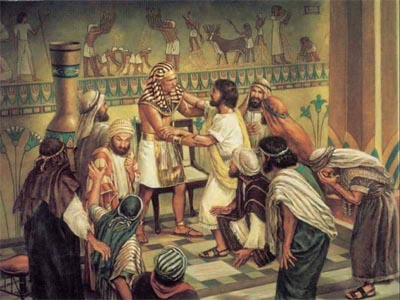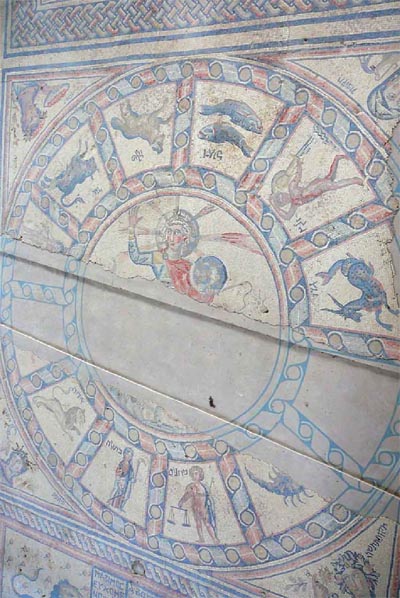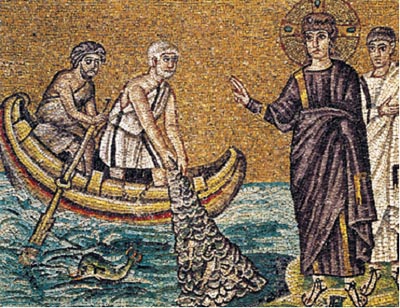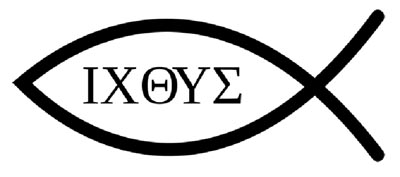ASTROLOGY IN THE BIBLE: TAURUS & PISCES
Continuing Ralph Ellis’s look at Astrology in the Bible; in ASTROLOGY IN THE BIBLE: ARIES connections involving Aries were examined, and here the focus turns to Taurus and Pisces …
So what further evidence do we find in the Bible, that the early Judaic priesthood venerated the precessional zodiac? Surprising as it may seem, we may well have a verbatim description of this change in the Great Month, from Taurus to Aries, in the Torah story of Joseph (the patriarch who wore the coat of many colours). The period in question is just after the historically attested Exodus of the Hyksos Pharaohs of Egypt, who were kicked out of Egypt in about 1570 BC. Remember that the Hyksos were known as the Shepherd Pharaohs, and it will be a frequent assertion in this and later articles that these Hyksos peoples were related to or allied to the Israelites, which is why the Israelite patriarchs were known as ‘shepherds’.
In the Torah’s account of these events, Joseph went down into Egypt and became both the Prime Minister of Egypt (the Vizier) and the High Priest of Heliopolis. Joseph then invites his brothers down into Egypt; but he has a warning for them and says to them:
And it shall come to pass, when Pharaoh shall call you, and shall say, What is your occupation? You shall say, “Thy servants’ trade has been about cattle from our youth even until now, both we, and also our fathers” …. for every shepherd is an abomination unto the Egyptians. Gen 46:33
However, while this sentence is quite clear it makes absolutely no sense in agricultural terms, for the Egyptians had no proscription against eating sheep. Quite the reverse, in fact, for it was the bull that was sacred in Egypt, much as it is in India to this day. But this warning makes every sense in terms of precessional astronomy, and its attendant veneration or religion. What Joseph actually meant by this warning was:
And it shall come to pass, when Pharaoh shall call you, and shall say, What is your religion? You shall say, “Thy servants’ religion has been to venerate the Apis-bull (Taurus) from our youth even until now, both we, and also our fathers” … for every Hyksos Shepherd (venerator of Aries) is an abomination unto the Egyptians. Gen 46:33
Well of course the Hyksos Shepherds were an abomination to the (Upper) Egyptians, because they had only just waged a prolonged and very bitter civil war against the Hyksos and kicked them out of the country. Thus this particular Torah verse is probably a word-for-word account of a meeting between Joseph and the Upper Egyptian pharaoh. In other words, the Torah does contain valid and very interesting historical information, if we know how to interpret it, and much of that information points towards precessional astrology being a central component of the early Judaeo-Christian belief system.

But the centuries passed, and the Earth continued to wobble or precess on its axis, in its predictable fashion, and the Great Month of Aries finally drew to a close at the turn of the first century AD. In its wake we then witnessed the rise of the Great Month of Pisces, and the simultaneous rise of the New Testament accounts. And it is in the Nazarene creed of Jesus and James that we find further evidence for the veneration of astrology in the Bible. And the first evidence for this comes from the recent archaeology of the region. Six very early synagogues have been excavated in Judaea and Jordan in the last decades, and strange as it seemed to the archaeologists and rabbis alike, all of them had a mosaic zodiac on the floor. The following example is the magnificent zodiac at Hamat Teverya, on the Sea of Galilee, which is worth looking at in some detail.

As we are beginning to see, all these early religions were Sabaean (ie: celestial and astrological), whose priests studied the Cosmos and the Solar System; and yet despite our recognition of their expertise, this zodiac still contains some remarkable and unexpected surprises. Firstly, it confirms that early (Nazarene) Judaism was tracking the precession of the equinox, because the head of Helios (the Sun) has been deliberately arranged in this zodiac to point at the conjunction between Aries and Pisces – i.e.: Helios is pointing at a precessional date of the early 1st century AD, the very era when when the Great Month of Aries gave way to the Great Month of Pisces. Thus the artist or priest who designed this zodiac clearly knew about precession, and no doubt he depicted this conjunction because this mosaic was constructed at this very time.
Note also that Helios, the Sun-god, is holding a blue spherical Earth. Remember that this is a 1st century mosaic, and yet the artist knew that the Earth was spherical and looked blue when viewed from space. Interesting is it not? And this proves once more that Copernicus was merely a charlatan who openly declared what was already known about in Enlightened and Illuminated circles – for everyone knew the world was spherical. But it has to be said that the predominance of blue seas on this spherical Earth Earth is definitely a bonus in this particular imagery. This is why the Black Adder comedy series on the BBC branded Copernicus as the greatest liar of our age, for there was more to this series and to the Life of Brian than initially meets the eye.
So the Hamat Teverya zodiac points to the precessional conjunction between Aries (sheep) and Pisces (fish), which occurred in the early 1st century AD. Yet this is why, of course, Jesus was born as a Lamb of God but became a Fisher of Men – and so the image of Helios on this zodiac most probably represents Jesus himself, as the Son or Sun of God. But note that this Jesus figure has blonde hair, which will become an important issue in a later article. In the clearest possible terms, then, the gospels are spelling out the true astrological basis and nature of Jesus’ Nazarene Church, by referencing lambs and fish in the correct astrological context and era.
This overt link to the Age of Pisces is why the gospels made such an issue about Jesus fishing on the Sea of Galilee, and so when Jesus lowered his nets into the lake to catch ‘fish’ he was in reality catching converts and followers who understood that Aries had turned into Pisces. Thus these so-called biblical ‘miracles’ were actually a record of pious evangelism, and catching more adherents to the Nazarene Church’s veneration of Pisces.

But this is not all. Just as we saw with the Old Testament example we have just looked at, the New Testament likewise contains verses that clearly relate the knowledge and veneration of precessional astrology. And just as with the previous example, the English translators appear to have done their best to cover up these cosmic and astrological allusions. Take this verse, for instance:
And as (Jesus) sat upon the Mount of Olives, the disciples came unto him, saying: ‘Tell us, when shall these things be? and what shall be the sign of thy coming and of the End of the World?’ (Math 24:3)
But this is not a very enlightening translation of this verse, because the word being used here is not kosmos (meaning ‘world’), but aion (meaning ‘age’). The word aion actually refers to an ‘age’, just as it still does in English to this day, and so a much better translation of this verse may well be:
And as (Jesus) sat upon the mount of Olives, the disciples came unto him, saying: ‘Tell us, when shall these things be? and what shall be the sign of thy coming, and of the End of the Age?’ (Math 24:3)
So what ‘Age’ was ending in the early 1st century AD, that Jesus could enlighten his disciples about? The answer is more than obvious for the ‘End of the Age’ being discussed here is, of course, the end of a precessional sign of the zodiac – the end of the Age of Aries in about AD 10 – which is why Jesus made the otherwise curious transition from Lamb of God (Aries) to Fisher of Men (Pisces). In other words this verse contains a double conundrum, for here we have the twelve disciples, who represent the twelve constellations, asking a question about the ruling constellation of that era. Undoubtedly this was a deliberate literary device by the gospel author, that only the Enlightened and Illuminated were supposed to understand – although it has to be said that many of the disciples are regularly portrayed as not understanding any of the occult (hidden) aspects of the Nazarene creed, so perhaps some of them were just a bit dim.
But we might be able to make a further translation of this verse, for what does it mean by ‘sign’? It is worded to appear to be an event, but the Greek word is semeion, which literally means a ‘mark’ or ‘token’. Thus we might reasonably re-translate this verse once more, and derive:
And as (Jesus) sat upon the mount of Olives, the disciples came unto him, saying: ‘Tell us, when shall these things be? and what shall be the sign of the constellation at thy coming, and the sign of the constellation at the End of the Age?’ (Math 24:3)
Thus we are now in a position to answer the more dimwitted of the disciples’ questions, and we could advise them: “Jesus was born at the conjunction between the Age of Aries and the Age of Pisces, and this new era will not end until we reach the Dawning of the Age of Aquarius – these are the Signs and Ages you must understand and pass on to future generations.” (To future generations of bearded hippies at Glastonbury.)
But in addition to tracking the path of the constellations, the Sabaean-Nazarene priesthood were always looking for a special monarch who was born at the start of the next Age, the next Great Month. And Jesus was that special christ or king (‘christ’ simply means ‘king’), which is why he was hailed as a messiah and became so influential. So Jesus was not simply the King of the Jews, he was also the first King of Pisces. However, this Enlightened and Illuminated celestial creed of Nazarene Sabaeanism was all but extinguished by the vacuous creed of Simple Judaism (Christianity) that followed it. Yet this celestial knowledge was not entirely extinguished as much of it went underground, which is why the later Arthurian legends continually spoke of a line of semi-mythical Fisher Kings – the continuing line of kings who were born during the Great Month of Pisces and understood and venerated this Piscean symbolism. Just like Alexander and Ptolemy, who displayed the ram-horn symbolism of Aries, the symbol of the Merovingian kings of Gaul was the fish.
So Jesus became the first King of Pisces, the first of the Arthurian Fisher Kings. And this is, of course, why the symbolism of early Christianity was the fish, and the primary Christian monogram was ?????, which referred to ichthys the Greek for ‘fish’. (Readers may see this monogram being used as a trendy bumper-sticker for born again Christians, so they might like to inform the driver that they are actually venerating the Age of Pisces.)

As readers can perhaps now see, early Judaeo-Christianity was originally a Nazarene-Sabaean stellar cult that looked to the stars and the planets; and the motions of these stellar bodies not only determined future events, they also tracked and documented the lives and reigns of the various monarchs and monarchies. If a monarch is known to have been the third king of the Age of Aries, the date of his reign can be established with some precision and confidence, because his reign is marked and delineated in the movements of the heavens above. In fact, we use the very same chronological system to this day, for the year zero in our current calendar was not set to mark the birth of Jesus, rather it was set to honour the start of the Age of Pisces. So at the time of writing, we are now in year 2014 of the Age of Pisces.
These articles were extracted from the books:
Cleopatra to Christ
King Jesus
Mary Magdalene, Princess of Orange
Jesus, King of Edessa
About the Author:
Ralph Ellis is author of Cleopatra to Christ, King Jesus, Mary Magdalene, Princess of Orange. All are available on iPad, Kindle, or Nook. Paperback copies available from Adventures Unlimited of Illinois. See: http://www.edfu-books.com/
